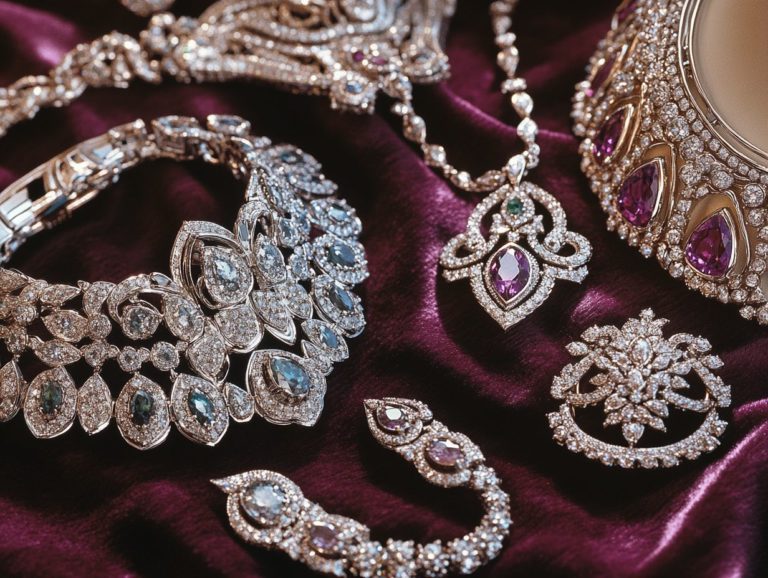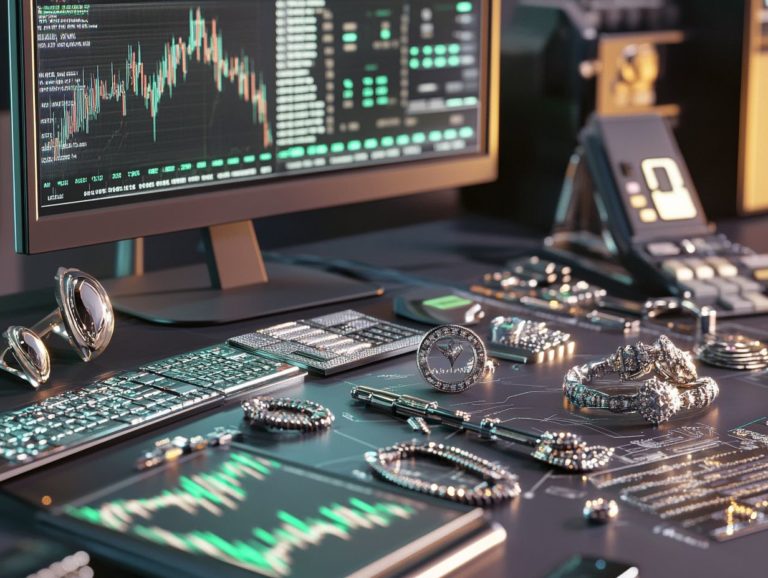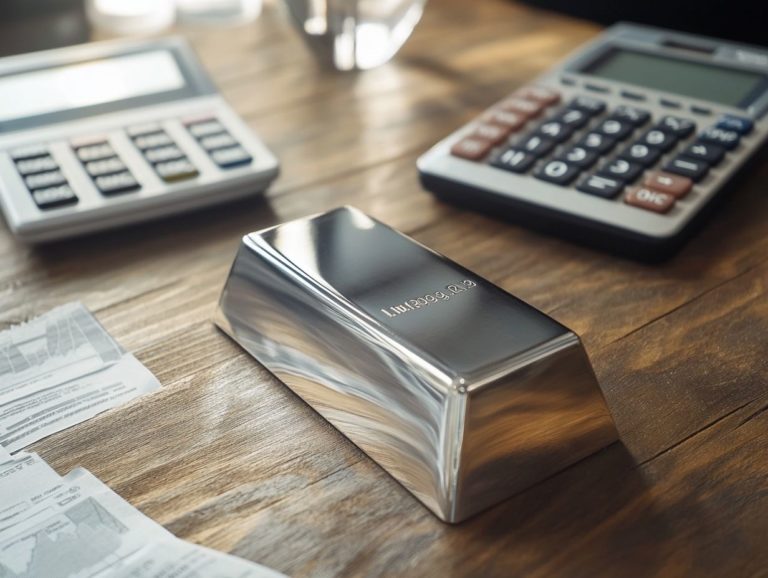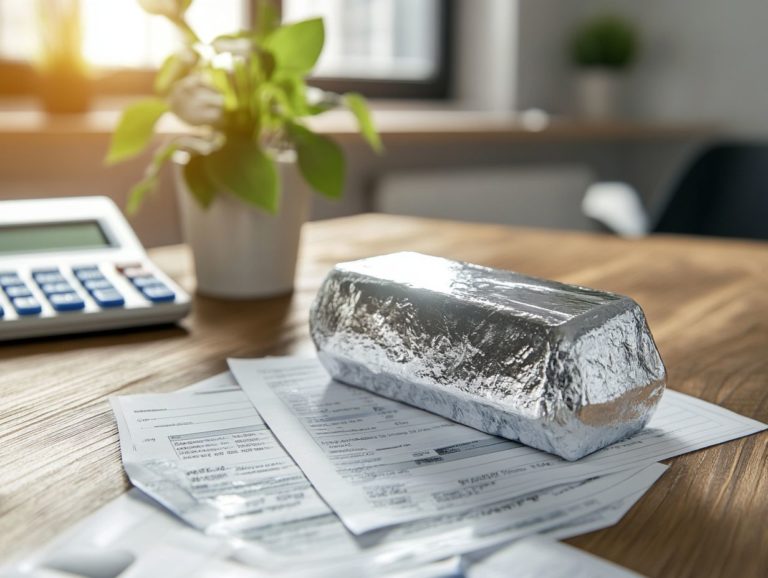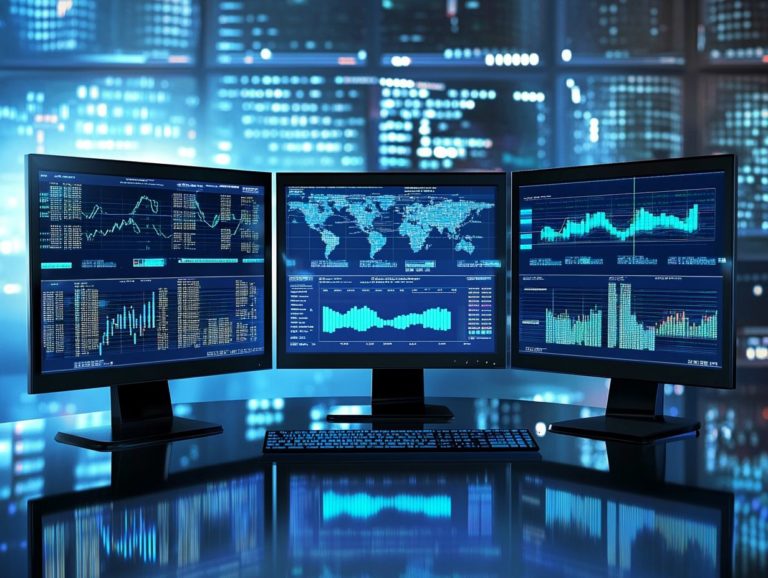5 Reasons to Include Platinum in Your Investment Mix
Investing in precious metals typically brings gold and silver to mind, yet platinum deserves your attention. This article delves into the unique advantages of integrating platinum into your investment portfolio. You’ll discover how it can diversify your investments, protect against inflation, and offer impressive returns.
Learn what makes platinum truly valuable, how it compares to other precious metals, and the factors influencing its price. Discover why adding platinum is a smart and timely move for your financial future!
Contents
- Key Takeaways:
- 1. Diversifies Your Portfolio
- 2. Hedge Against Inflation
- 3. Potential for High Returns
- 4. Limited Supply and High Demand
- 5. Acts as a Safe Haven Investment
- What Is Platinum and Why Is It Valuable?
- Frequently Asked Questions
- What is Platinum and why should I consider including it in my investment mix?
- What are the top 5 reasons to include Platinum in my investment mix?
- What makes Platinum a good diversification tool for my portfolio?
- How does Platinum’s industrial demand play a role in its investment potential?
- Can Platinum be considered a stable and secure investment?
- Is Platinum affected by inflation and economic downturns?
Key Takeaways:
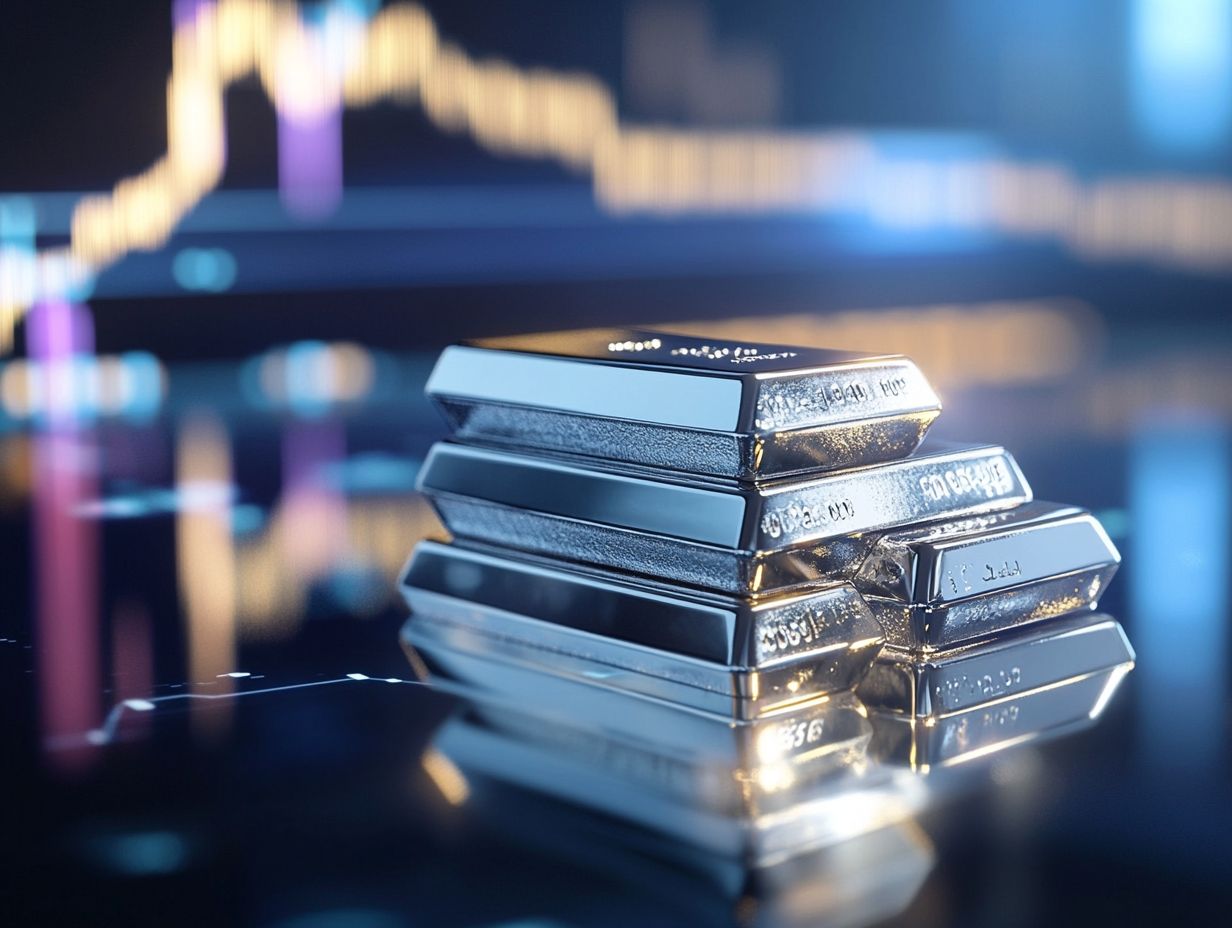
- Boost your portfolio with platinum, a rare and valuable precious metal.
- Protect your money from losing value by investing in platinum, which has shown resilience during economic downturns.
- Take advantage of potential high returns, as platinum has a history of outperforming other precious metals.
1. Diversifies Your Portfolio
Incorporating platinum coins into your investment portfolio is a smart move for diversification. This approach appeals to seasoned investors and newcomers alike. Platinum’s distinct attributes and market potential help balance risk across various assets, offering a reliable investment avenue amid market fluctuations.
By understanding the value of platinum investment, you can make informed decisions and navigate market trends while leveraging coin collectibility to enhance your financial strategies.
The allure of platinum coins goes beyond their actual worth; they also protect against inflation. As inflationary pressures rise in various economies, investors increasingly seek alternative assets that preserve purchasing power.
Since platinum is rarer than gold and silver, it naturally attracts attention and investment, significantly boosting its market demand. The growing interest in collectible coins adds to their appeal, as certain limited-edition platinum pieces can appreciate above their metal value.
Diversifying with platinum coins helps reduce risk and positions you for future gains as trends evolve in the precious metals market.
2. Hedge Against Inflation
Investing in platinum offers a strong defense against inflation, helping you maintain wealth in an economy with fluctuating prices and market volatility. With rising concerns about inflation, having a portion of your portfolio in precious metals especially platinum becomes essential.
This valuable metal protects your money from losing value during economic shifts and cushions the impact of rising costs.
The unique qualities of platinum make it especially valuable during inflationary periods. Its rarity and diverse industrial applications drive demand. Current economic indicators, like supply chain disruptions and soaring energy prices, heighten inflationary pressures, emphasizing the need to reassess your investment strategies.
By adding platinum to your investment portfolio, you not only diversify your assets but also position yourself to benefit from potential price appreciation as demand surpasses supply. A well-balanced mix of platinum with other commodities can strengthen your long-term financial resilience, providing a more effective defense against inflation’s unpredictability.
Start investing in platinum today to secure your financial future!
3. Potential for High Returns
Platinum investment presents an enticing opportunity for substantial returns. This makes it a compelling choice as you look to capitalize on emerging market trends and price movements.
The historical value of platinum, along with its distinctive qualities and industrial demand, positions it favorably within the global precious metals market. As economic growth unfolds, the balance between supply and demand can create advantageous price trends, attracting your interest in this precious metal.
Several factors enhance platinum’s appeal as an investment. Over the last decade, the price of platinum has seen dramatic swings. These fluctuations are influenced by industrial applications in catalytic converters, demand in jewelry, and prevailing investment trends.
For instance, during periods of economic prosperity, an increase in automobile production can drive prices higher due to greater demand for catalytic converters. Conversely, an economic downturn may lead to reduced industrial activity, affecting platinum s market valuation.
As a savvy investor, you might consider diversifying your portfolio with platinum ETFs or futures contracts to shield against market volatility. Monitoring geopolitical events and global economic indicators can also provide valuable insights into market timing, potentially maximizing your returns.
4. Limited Supply and High Demand
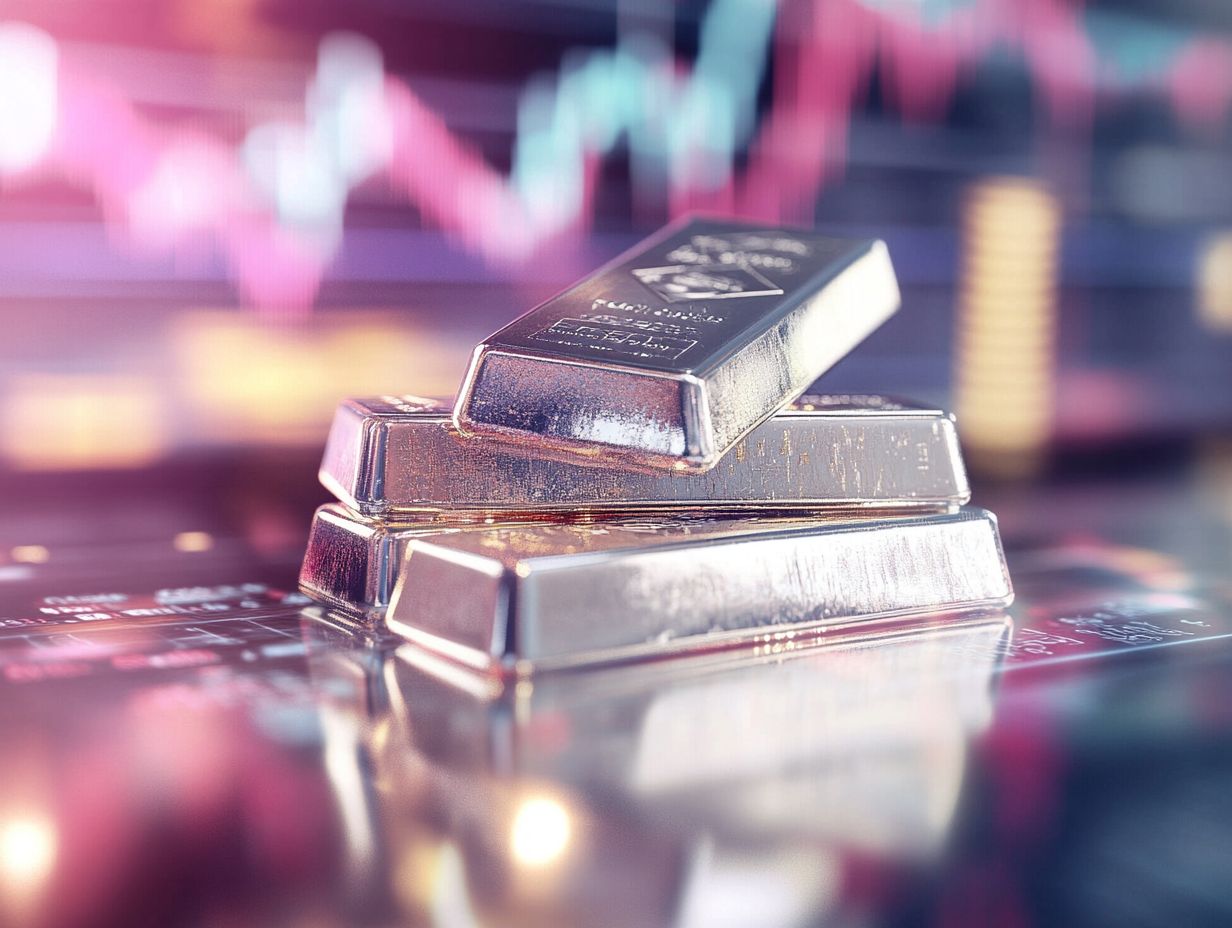
The platinum market offers a unique investment landscape shaped by limited supply and strong industrial demand. Mining operations face challenges such as political instability and environmental concerns, which only enhance platinum s value.
This dynamic opens doors for you to take advantage of rising price levels, particularly due to increasing industrial applications of platinum in the automotive and electronics sectors.
The automotive industry heavily relies on platinum for catalytic converters. Strict emissions regulations demand efficient technologies to minimize pollutants. Meanwhile, manufacturing companies utilize platinum in various high-temperature applications and electronic components, highlighting its versatility.
Political instability in platinum-mining regions can lead to supply disruptions, causing pricing volatility. Both consumers and manufacturers feel the ripple effects of these dynamics, making the market increasingly unpredictable. For investors, this landscape is filled with exciting opportunities and challenges that shouldn t be overlooked.
5. Acts as a Safe Haven Investment
Platinum is a safe option. It helps protect your money during tough economic times and market fluctuations. As global dynamics shift and geopolitical risks increase, many investors turn to precious metals like platinum to cushion their potential losses.
Its historical performance during crises shows its reliability as a protective asset, making it a cornerstone in effective risk management strategies.
Historically, during economic downturns, platinum has shown distinct behavior when compared to other metals like gold or silver. For example, during the 2008 financial crisis, while many assets faltered, the price of platinum remained relatively steady, providing a valuable buffer for those who invested in it.
This unique characteristic arises from its industrial applications especially in automotive catalysts which keep demand consistent, regardless of economic conditions. By incorporating platinum into your investment strategy, you can harness its dual nature as both an industrial metal and a store of value.
Diversifying your investments to include platinum can create a cushion against volatility and significantly enhance your portfolio’s resilience. Consider adding platinum to your portfolio today!
What Is Platinum and Why Is It Valuable?
Platinum is a precious metal known for its rarity and exceptional properties. It is a valuable asset across various industries, including automotive applications and luxury jewelry.
Its unique characteristics, such as a high melting point and the ability to resist rust and wear, elevate its significance in manufacturing and industrial sectors.
Demand for platinum is rising, particularly in hydrogen-fueled vehicles and dental applications. Its market value reflects both historical worth and current investor interest.
Not only is platinum highly prized for its durability, but it also boasts remarkable catalytic properties, which enhance its value in chemical reactions. This metal has been esteemed since ancient times, with significant usage recorded in pre-Columbian South America.
When compared to gold and silver, platinum’s scarcity adds to its allure and investment potential, leading to diverse applications, from electronics to medical devices.
Its role in sustainable technologies, like fuel cells, is also crucial. This highlights platinum’s importance in the pursuit of a greener global economy, making it an invaluable resource for future innovations.
How Does Platinum Compare to Other Precious Metals?
When comparing platinum to other precious metals like gold, silver, and palladium, several distinctive factors influence market trends and investment strategies. Each metal has unique properties and applications, resulting in varying levels of investor interest and market value.
Grasping the nuances of these precious metals is essential for crafting an investment strategy aligned with economic factors and your personal financial goals.
Platinum is notably rarer than gold and silver, often giving it a premium price. This makes it an attractive option for certain investors. Its primary industrial applications, particularly in devices that help reduce harmful emissions, underline its demand in both manufacturing and sustainability sectors.
This industrial dependency can lead to volatility, as fluctuations in automotive production impact platinum’s market value. Meanwhile, gold and silver are recognized as safe-haven assets during economic downturns, shaping investor behavior differently.
These contrasting characteristics highlight the importance of diversifying your portfolio and staying informed about the market dynamics that shape the investment landscape.
What Are the Different Ways to Invest in Platinum?
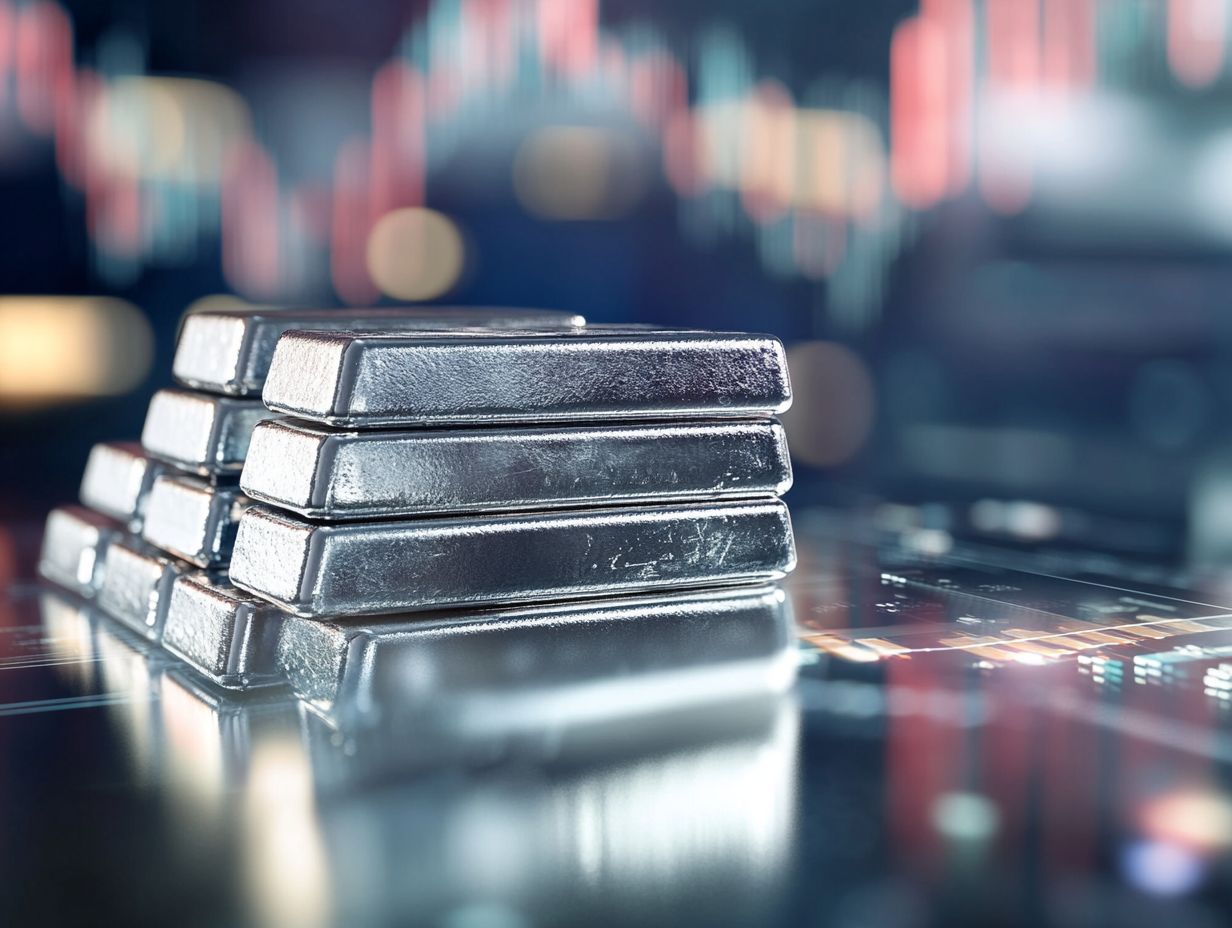
You have various options when investing in platinum, including physical bullion, platinum bars, mining stocks, and trading options. Each method has its advantages and considerations, allowing you to choose an investment avenue that aligns with your financial goals and risk appetite.
Physical bullion’s appeal lies in its tangibility and intrinsic value, serving as a hedge against inflation and currency fluctuations. However, storing and insuring these tangible assets can incur additional costs.
On the other hand, investing in mining stocks could yield higher returns, as these companies benefit from increased demand and rising prices. Yet, this route carries risks related to operational inefficiencies and geopolitical uncertainties.
By blending both physical assets and equities tied to platinum mining, you can diversify your portfolio to mitigate risks. Stay alert to market dynamics that could impact the value and performance of your investments.
What Are the Potential Risks of Investing in Platinum?
Investing in platinum comes with its share of potential risks, including price volatility and market fluctuations that can significantly influence your investment results. Elements like changing industrial demand, global political issues, and economic uncertainties contribute to these demand swings, making it essential for you to adopt a robust risk management strategy.
Being aware of these risks enables you to make informed decisions and effectively navigate the complexities of the platinum market. This volatility can be intensified by shifts in global economic conditions, alterations in currency values, and changes in mining regulations.
To balance the risks of investing in platinum, consider diversifying your portfolio. Effective strategies include:
- Setting stop-loss orders,
- Staying informed about industry trends,
- Investing in a mix of assets.
By maintaining a watchful eye on supply problems and technological advancements that may influence platinum’s value, you can enable yourself to make more strategic investment decisions.
What Are the Factors That Affect the Price of Platinum?
The price of platinum is shaped by a tapestry of factors, including economic conditions, supply and demand dynamics, and industrial demand from sectors like automotive and jewelry. Grasping these elements is essential for you as an investor seeking to navigate the platinum market with confidence.
Supply fluctuations due to mining operations, combined with shifting global market trends, can lead to notable price movements, highlighting the necessity of thorough market analysis.
Macroeconomic indicators such as inflation rates, interest rates, and currency strength play pivotal roles in sculpting the market landscape. Industrial demand, particularly from the automotive sector where platinum is utilized in catalytic converters, can have a profound impact on supply levels, especially if production rates fluctuate or new technologies emerge.
Geopolitical events can create uncertainties that ripple through the supply chain, affecting availability and, ultimately, the price of platinum. Therefore, staying informed about these developments is crucial for anyone engaged in or monitoring the platinum market.
How Can One Incorporate Platinum into Their Investment Strategy?
Incorporating platinum into your investment strategy requires thoughtful planning and a keen understanding of how it complements your overall portfolio, particularly with respect to diversification and risk management. Start by seizing the opportunity to assess your portfolio for any gaps where platinum could bring balance.
Next, establish a budget for how much capital you can comfortably allocate to platinum investments without jeopardizing your financial stability. After that, research various platinum investment vehicles be it ETFs, or exchange-traded funds, mining stocks, or physical bullion to find the option that aligns best with your risk tolerance.
Finally, keep an eye on market trends and economic indicators, adjusting your investment strategy as necessary to ensure it continues to align with your overall financial objectives.
Frequently Asked Questions
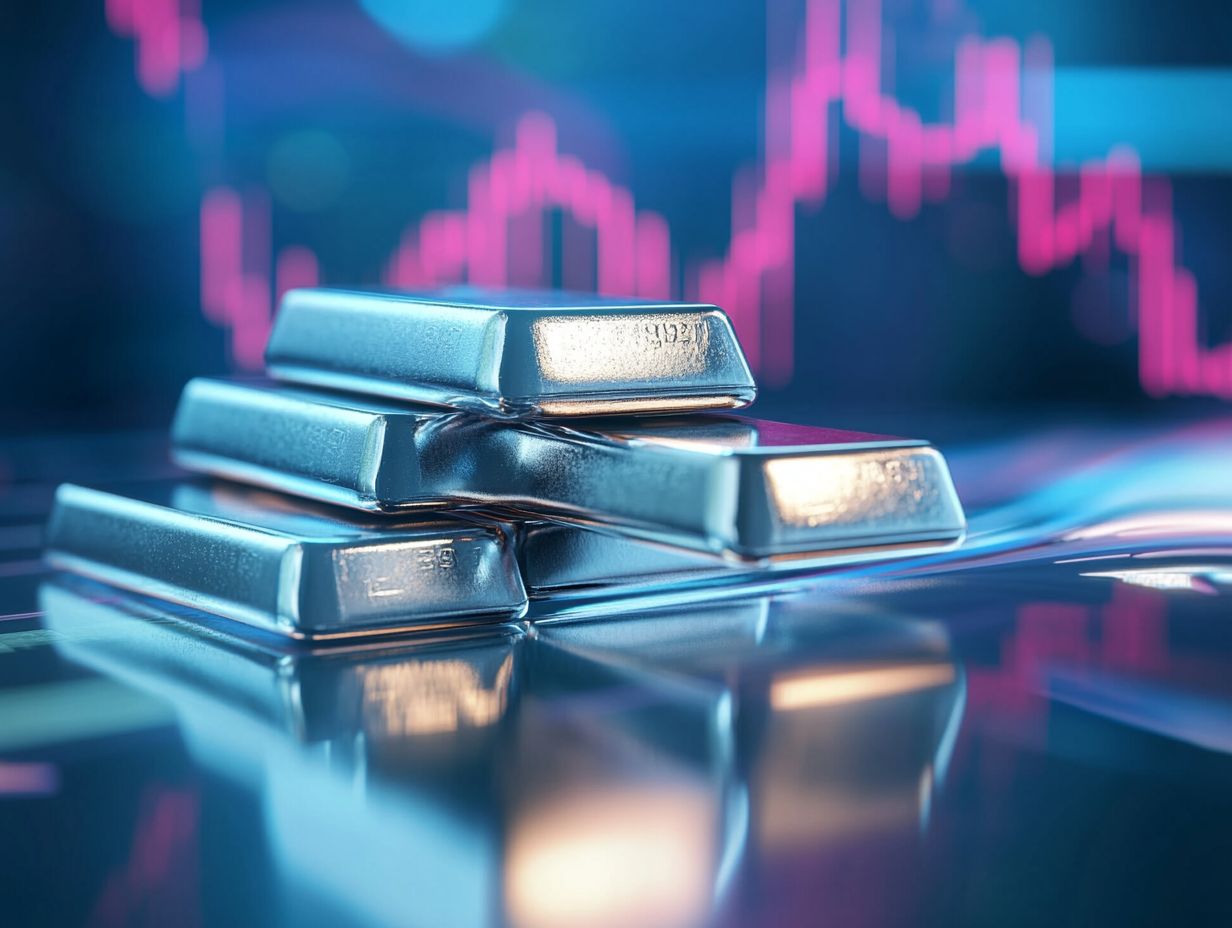
What is Platinum and why should I consider including it in my investment mix?
Platinum is a precious metal that has a variety of industrial and investment uses. It is highly valuable and can provide diversification to your investment portfolio.
What are the top 5 reasons to include Platinum in my investment mix?
The main reasons to include platinum in your investment mix are its rarity, diversification benefits, growth potential, industrial demand, and its role as a hedge against inflation and economic uncertainty.
What makes Platinum a good diversification tool for my portfolio?
Platinum’s price movements do not closely correlate with traditional investments like stocks and bonds. This makes it a great way to spread risk in your investments.
How does Platinum’s industrial demand play a role in its investment potential?
Platinum is widely used in industrial processes, from automobile manufacturing to jewelry production. This steady demand can positively impact its value and potential for growth.
Can Platinum be considered a stable and secure investment?
With any investment, some level of risk is always involved. However, Platinum has historically held its value well and stands out as a potentially stable investment, particularly in uncertain economic times.
Is Platinum affected by inflation and economic downturns?
Platinum’s value is not directly tied to the stock market’s performance. This means it can help protect your money’s value when prices rise or during economic downturns.










